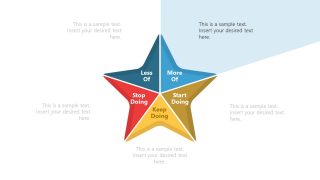
It helps to improve the morale of the workplace and the team. It helps you reinforce a positive working environment by inspiring your team to recognize the efforts of others and helps you understand what is lifting them up, and dragging them down. Using a hot air balloon retrospective can change up your retrospective game. GroupMap’s hot air balloon retrospective focuses on three areas: Why Do a Hot Air Balloon Retrospective? Additionally, it recognizes and acknowledges the effort of team members.
+-+starfish+activity.png)
Like the agile and 4Ls retrospectives, the hot air balloon retrospective supports the continuous improvement of a product or program.Ī hot air balloon is used as a metaphor to help identify specific elements of a team’s most recent work, sprint or iteration. The hot air balloon retrospective is a simple, creative take on traditional retrospectives. Anchors and Engines Retrospective Template The anchors and engines retrospective allows you to identify barriers so they can be addressed. It is a great tool for teams who might be in the middle of the project and finding that their progress has not been what they would like it to be or where people have experienced frustrations.
Starfish retrospective full#
Using an anchors and engines agile retrospective helps teams shape the next steps with the end goal in full view. Why Do an Anchors and Engines Retrospective? GroupMap’s anchors and engines retrospective focuses on two areas: This could include difficulties with sticking to the critical path, meeting agreed outputs, or delivering goals. The team can share what is slowing them down (anchors) and speeding them up (engines). The anchors and engines retrospective is intentionally simple. It aims to identify the things that are impacting your team’s productivity. The anchors and engines agile retrospective is the perfect tool to use when you want to review the velocity of a project. What is Anchors and Engines Retrospective? It helps you reinforce healthy workplace habits by empowering your team to pursue their own continuous improvement. With this in mind, GroupMap’s starfish retrospective does more than support your team’s review of their last sprint. This could include how they work within the organization and the way they work together as a team.

With it, they can examine the ‘how’ and the ‘what’ they do. Using a starfish retrospective helps a group refine their actions for future sprints. The starfish retrospective focuses on five areas: This gives the group a greater timeframe of activity for them to consider. Given that the focus of the starfish retrospective is on ‘current practice’, it’s best run after a number of retrospectives have occurred. This then informs the group’s next steps. In doing so, the group can decide which should receive more energy and which should receive less. It invites a group to think about and assess the practices that generated value. In other words, unlike more traditional retrospectives, the starfish retrospective goes beyond creating a list of what happened or didn’t happen.

It helps them to think about the varying degrees of the value of their actions and efforts. It offers a different lens through which a group may review their work. The starfish retrospective was designed by Patrick Kua.


 0 kommentar(er)
0 kommentar(er)
